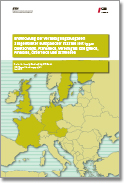Development of Defense Expenditures of Selected European States Since 1990

Germany, France, United Kingdom, Finland, Austria, and Sweden
Author(s): Marco Wyss
Editor(s): Andreas Wenger
Publisher(s): Center for Security Studies (CSS), ETH Zürich
Publication Year: 2013
